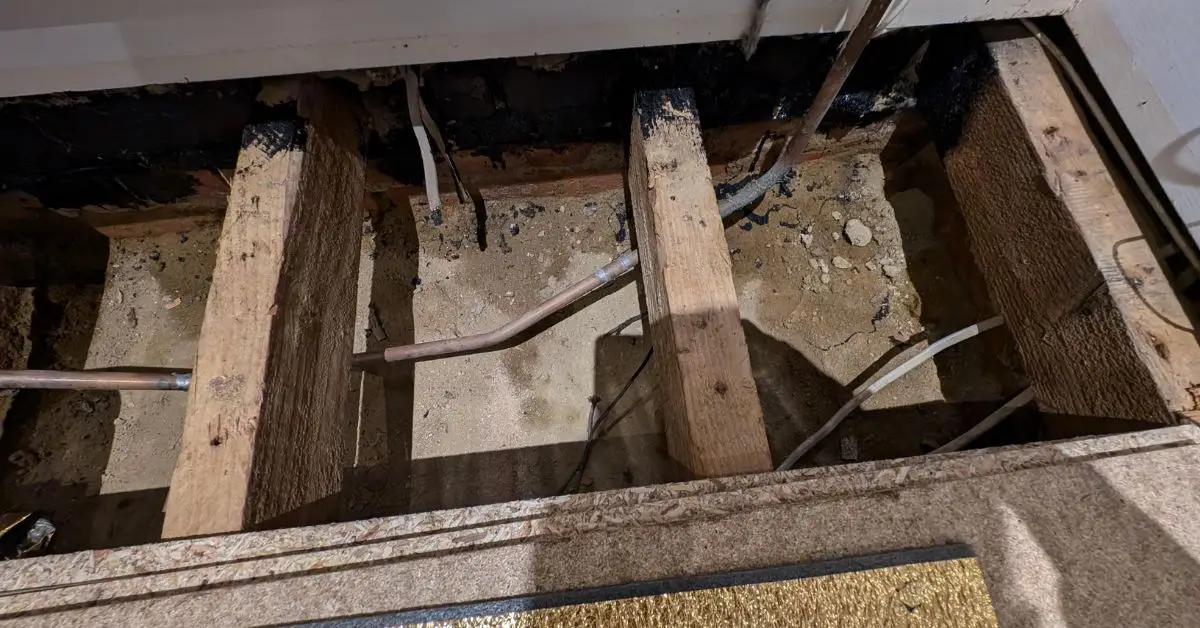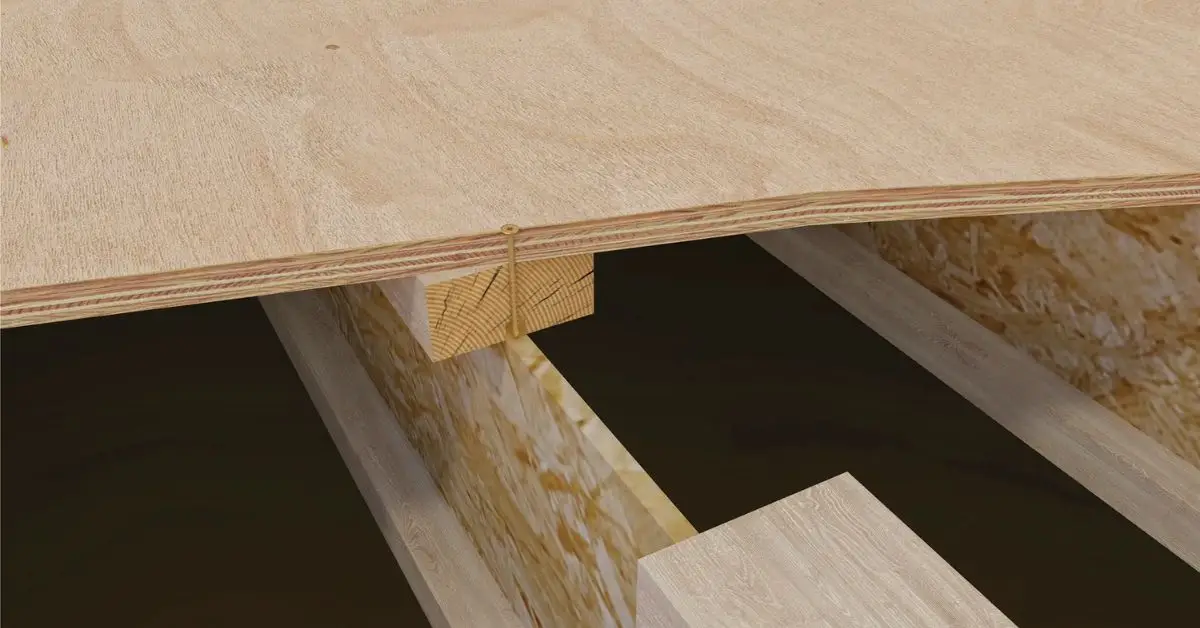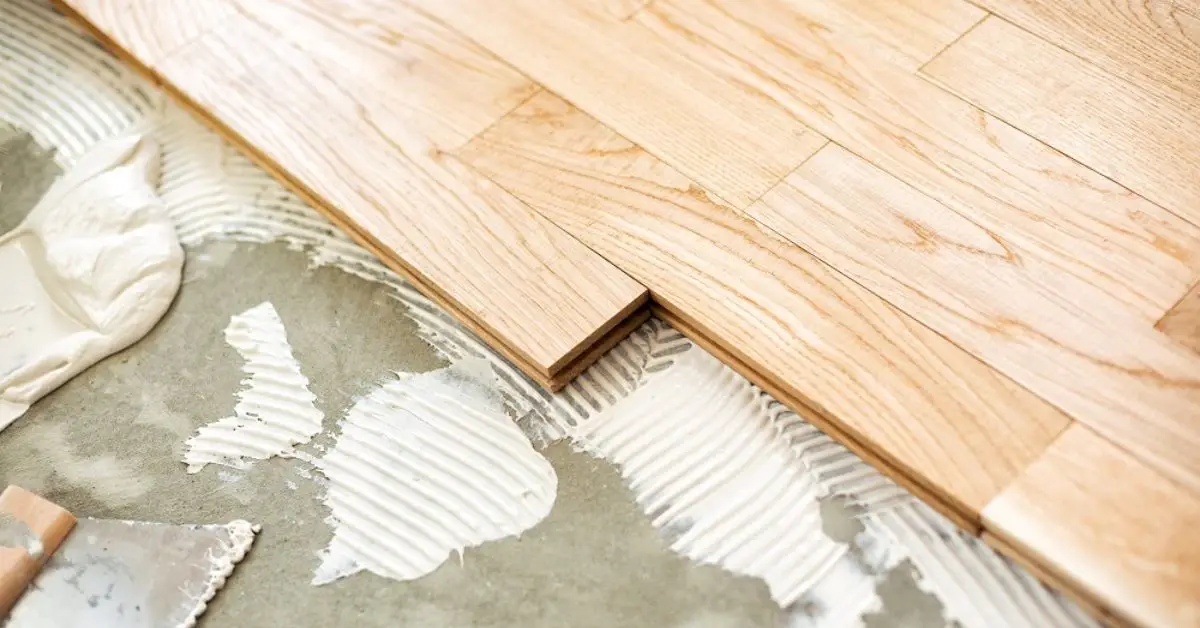How to Replace a Subfloor in 11 Simple Steps – A Complete Guide
If you’ve ever walked across your living room and felt the floor dip under your feet, or heard that annoying squeak every time someone takes a step, you know how unsettling it feels. For many homeowners, the first thought is, “This means I need to call a contractor, right?” But here’s the truth: you don’t. Replacing a subfloor isn’t reserved for professionals with tool belts and years of training. With the right approach, you can do it yourself — safely, step by step — and save a serious chunk of money.
I’ve seen countless people hesitate, worrying the job is too big, only to discover it’s just about patience, preparation, and a clear plan. That’s exactly what I’m going to give you here: a no-nonsense guide that breaks the process down into simple, manageable steps. By the time we’re done, you’ll not only know how to replace a subfloor but also understand the common mistakes to avoid so your floor lasts for years without a squeak.
Let me ask you before we dive in: when you think about your own floor problems right now, what’s the part that worries you most — the cutting, the joists, or just the fear of starting?
Tools, Materials & Safety (Bullet List)
Before you even lift a single board, it’s crucial to have all your tools, materials, and safety gear ready. Trust me, being prepared makes the job faster, cleaner, and much less stressful.
Tools you’ll need:
- Pry bar — for pulling up old flooring and underlayment
- Circular saw (set to panel depth) — precise cuts without damaging joists
- Oscillating multi-tool — great for tricky corners
- Drill/driver — for screws and fasteners
- Chalk line — to map cut boundaries
- Stud finder — locate joists accurately
- Shop-vac — control dust and debris
Materials:
- Plywood or OSB panels (T&G preferred for stability)
- Construction adhesive — ensures a firm bond
- Deck screws — secure panels to joists
- Shims & blocking — correct uneven areas
- Moisture meter — confirm dryness before installation
- PPE — N95 respirator, gloves, goggles
For more detailed step-by-step prep tips, you can check out The Spruce guide on replacing a subfloor naturally.
Step 1: Confirm Damage & Map the Area

Before jumping in, take a good look at your floor. You want to know exactly where the problem is so you don’t waste time replacing panels that are still solid.
How to check:
- Look for soft spots, sagging areas, bulging seams, or musty odors.
- Probe suspicious areas with a screwdriver to see if the subfloor gives.
- Mark the boundaries of damaged sections with a chalk line.
Tip: If you notice standing water or visible mold, don’t ignore it. Follow safe cleanup practices first — this keeps your work area safer and prevents future damage.
With this step, you’ll feel confident deciding whether to repair or fully replace the subfloor, instead of guessing.
Step 2: Clear the Room & Contain Dust
Now that you know what needs replacing, prep the space properly.
Room prep checklist:
- Remove all furniture and trim that might get in the way.
- Use plastic sheeting to create a barrier and prevent dust from spreading.
- Close HVAC vents — you don’t want dust traveling through your home.
- Keep a shop-vac handy and dampen debris to reduce airborne particles.
A cleaner workspace protects your lungs and makes cleanup much easier. Plus, it gives you that professional feeling, like you’re working with a clear, safe zone instead of just tearing up the floor.
Step 3: Pull Up Floor Covering (Tile/Vinyl/Laminate/Carpet)
Now comes the fun part — removing the old flooring.
Steps to follow:
- Lift your floor covering carefully based on the material: tiles may need a chisel, vinyl may peel off in sheets.
- Preserve trim whenever possible — it can be reused for a polished finish.
- Remove underlayment fasteners or staples completely so the joists and cut lines are clearly visible for the new subfloor.
Pro tip: A proper teardown ensures you can see the joist layout clearly, making the next steps of cutting and securing panels smooth and accurate.
While you’re working on the floors, it might also be a good time to check your gutters for any blockages. Unclogging your gutters before the rainy season can prevent water from seeping into your home and causing floor damage.
Step 4: Locate Joists & Mark Cut Lines
Accurate joist mapping is essential for ensuring your new subfloor is properly secured. This is where precision really counts.
Steps to locate and mark:
- Use a stud finder to locate joists from above the subfloor.
- Verify joist placement by probing edges with a screwdriver.
- Snap chalk lines centered directly over the joists to guide your cuts.
Pro tip: Accurate marking prevents floating seams and ensures your subfloor edges are strong enough to secure the new panels.
Without clear, centered lines, your cuts could be off, and your new panels might not fasten properly. This could lead to a weak floor and a lot of rework. Take your time to map this correctly!
Step 5: Set Saw Depth & Score Panels
Setting the correct saw depth is a crucial step to prevent damaging your joists. Don’t rush this part — it’s easy to make mistakes!
How to do it:
- Set saw blade depth to the exact thickness of the panel — avoid cutting into the joists.
- Score along the chalk lines for straight cuts. Use an oscillating tool for corners or areas near the walls to ensure clean edges.
Setting the right depth prevents structural damage. A common mistake beginners make is cutting too deep, which can damage the joists underneath, leading to costly repairs.
Step 6: Remove Damaged Subfloor in Sections
Now that the joists and cut lines are marked, it’s time to safely remove the old subfloor.
Steps for safe removal:
- Pry up the subfloor in manageable strips — don’t remove it all at once.
- Remove nails or staples from the joists to ensure a clean removal.
- Bag the moldy or rotted material and keep the area well-ventilated to avoid health risks.
Sectional removal gives you pace and control — handling it in manageable parts reduces the risk of injury and makes the process easier. Plus, bagging moldy material properly keeps the area clean and safe.
Step 7: Inspect & Repair Joists (Sister/Block if Needed)
Once the subfloor is removed, the next step is to check the condition of your joists. This is crucial for long-term floor performance.
What to check:
- Inspect joists for rot, cracks, or areas that are out-of-level.
- Sister the joists (adding an additional layer) or add blocking if needed to strengthen and level them.
- If you spot minor surface mold, treat it accordingly and ensure the moisture levels are within acceptable ranges.
Strong joists are essential for the stability of your new subfloor and floor. Skipping this step is one of the costliest mistakes you can make — weakened or damaged joists can compromise the entire floor’s performance and require even more repairs down the line.
After securing the joists and laying the new subfloor, don’t forget about the finishing touches. Installing floor transition strips can make a huge difference in the overall aesthetic and function of your floor.
Step 8: Dry-Fit New Panels & Maintain Expansion Gaps

Now, you’re ready to dry-fit your new panels, but there’s a key detail to keep in mind to prevent future issues.
Steps for dry-fitting the new panels:
- Cut panels to size, making sure to stagger the seams.
- Orient the long edge perpendicular to the joists for maximum stability.
- Leave a 1/8-inch gap at the edges and ends of the panels for expansion. This is crucial, especially in areas with fluctuating moisture levels.
For more on expansion gaps, refer to X.com discussion on subfloor replacement.
Expansion gaps are vital for preventing buckling or squeaks in the future. This is a pro-level detail that’s often missing in basic guides, but it ensures your floor performs well over time.
Step 9: Glue the Joists & Set Panels
Now that the joists are ready and your panels are aligned, it’s time to secure them properly. Using construction adhesive on the joists can drastically reduce squeaks and ensure your floor feels premium.
How to do it:
- Apply construction adhesive directly onto the joists before laying each panel.
- Walk panels into place and check for proper alignment using a straightedge to ensure everything is flush.
The combination of adhesive and proper bearing gives your floor that smooth, solid feel. This is the secret to squeak prevention and provides long-term durability.
Step 10: Fasten Panels Correctly (Screws > Nails)
Using the right fastening method makes a world of difference in the long-term performance of your subfloor.
Steps for correct fastening:
- Use deck screws instead of nails for stronger, longer-lasting bonds.
- Follow a fastening schedule — place screws closer together on the edges and slightly wider in the middle.
- Recheck the 1/8″ expansion gap around all edges to ensure proper spacing.
For more detailed fastening techniques, check out Old World Timber’s subfloor guide.
A correct fastening pattern ensures stiffness and reduces noise, especially when walking on the floor. DIYers often make mistakes here, so pay close attention to the pattern!
Step 11: Prep for Finish Floor (Underlayment / Flatness)

Before you start laying your final floor, you need to ensure the subfloor is perfectly prepared. This step is essential to ensuring the longevity and durability of your new flooring.
Prep tips for different flooring types:
- For tile, install cement backer board using thinset and screws. Typically, screws should be placed about 8 inches apart on the perimeter.
- For laminate/hardwood, verify underlayment rules and expansion clearances based on brand specs.
Surface readiness ensures that your new floor will last as long as possible and remain under warranty. It’s the final touch before the real transformation happens!
Once your subfloor is level, don’t forget that fixing wood floor scratches is a quick and effective way to ensure a smooth, even finish.
Cost Snapshot: DIY vs. Pro
Understanding the cost difference between doing it yourself and hiring a professional is a huge motivator for DIYers. Let’s break it down:
Cost comparison:
- Angi (2025) estimates the average cost for professional subfloor replacement is about $1,560, with a typical range of $900–$3,000. Costs can go as high as $10,000 for extensive repairs.
- DIY costs: Often hundreds of dollars, not thousands — especially if the existing structure is sound.
Common Mistakes to Avoid (Rapid-Fire List)
A big part of any successful project is knowing what not to do. Let’s go through some of the most common mistakes that DIYers make during subfloor replacement.
Here’s a quick checklist of what to avoid:
- No moisture check — ignoring this step can lead to mold or wood rot.
- No expansion gap — can cause buckling or squeaks.
- Using nails instead of screws — screws offer more stability.
- Skipping adhesive — adhesive helps to reduce squeaks and ensure long-term durability.
- Seams not staggered — weakens the structure and causes uneven surfaces.
- Landing seams off-joist — can cause the panels to move.
- Cutting too deep into joists — could damage the structure, leading to future issues.
Conclusion: Your Step-by-Step Path to a Solid, Long-Lasting Subfloor
Congratulations, you’re now armed with all the knowledge and steps to successfully replace your subfloor! Whether you’re tackling this DIY project to save on costs or simply enjoying the satisfaction of doing it yourself, following these steps will ensure a professional-grade result. By focusing on safety, accuracy, and the right tools, you’ll set your home up for a stable and long-lasting floor.
Remember, the key to a successful subfloor replacement lies in proper planning, attention to detail, and taking your time. If you stick to the process and avoid the common mistakes, your new floor will not only be sturdy but will also stay quiet, smooth, and free from squeaks for years to come.
At Build Like New, we’re dedicated to providing you with the tips, tricks, and expert guides you need to tackle any home renovation with confidence. Explore more about DIY home projects, home improvement tips, and everything in between.
Disclaimer: The information provided in this guide is for general informational purposes only. While we strive for accuracy, we recommend consulting a professional if you’re unsure about any step or the condition of your subfloor. Build Like New is not responsible for any damages or injuries that may occur during your DIY project.


